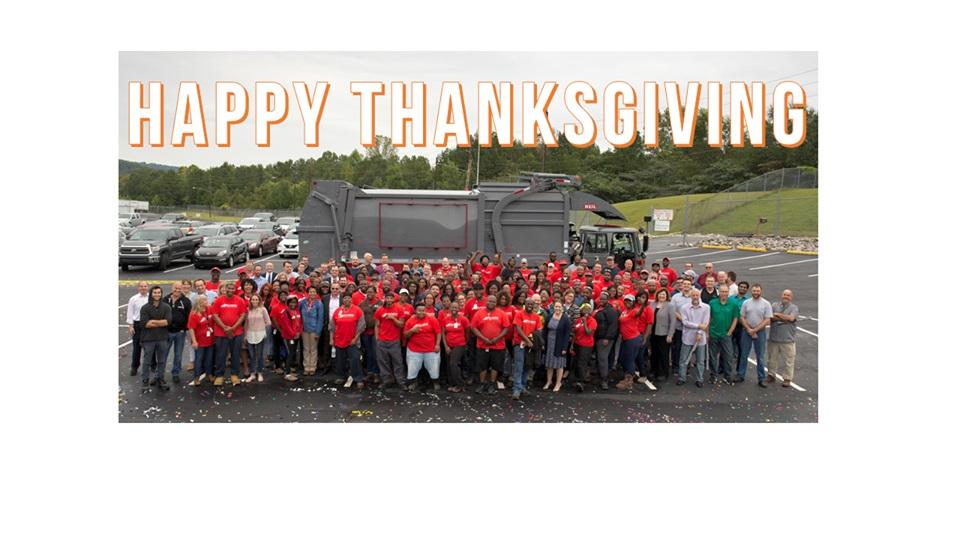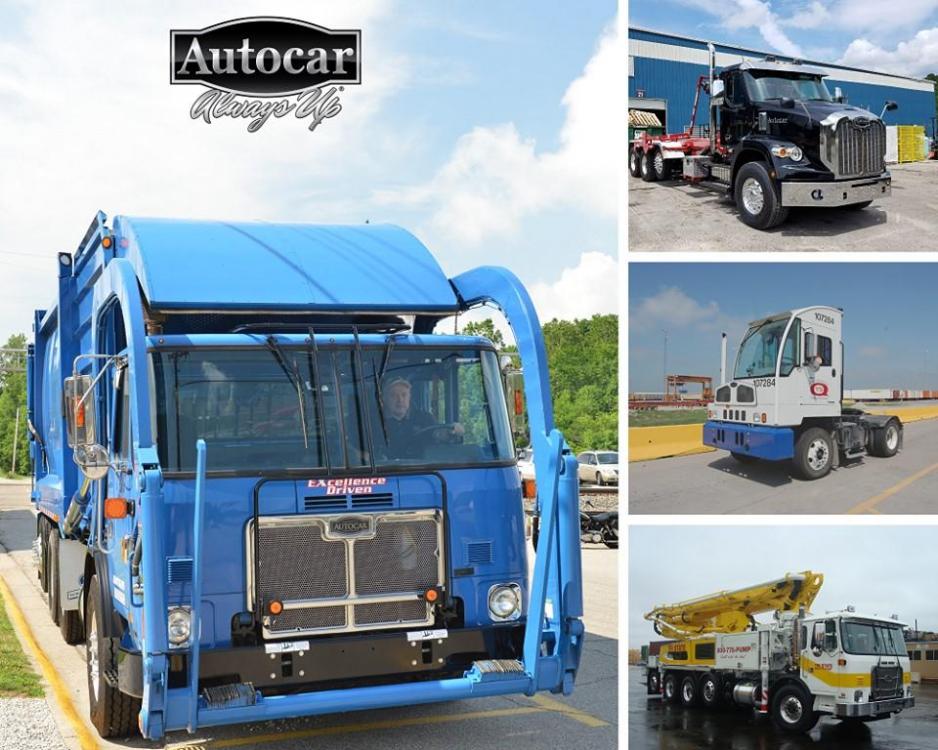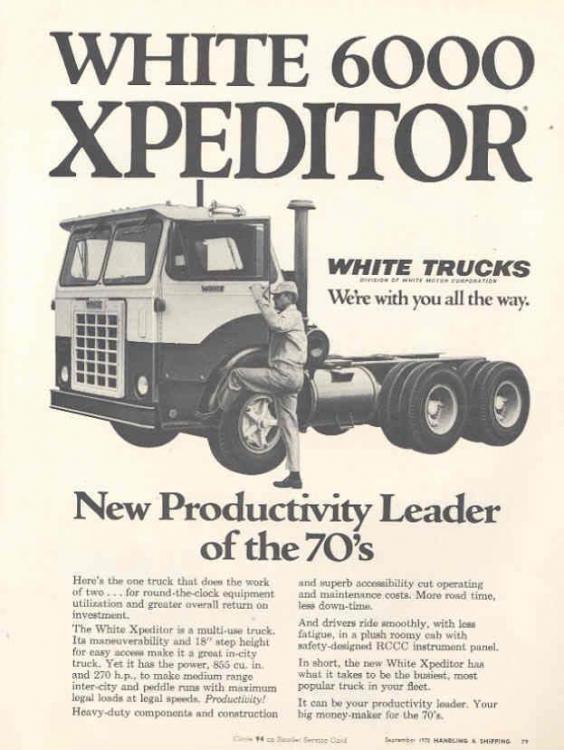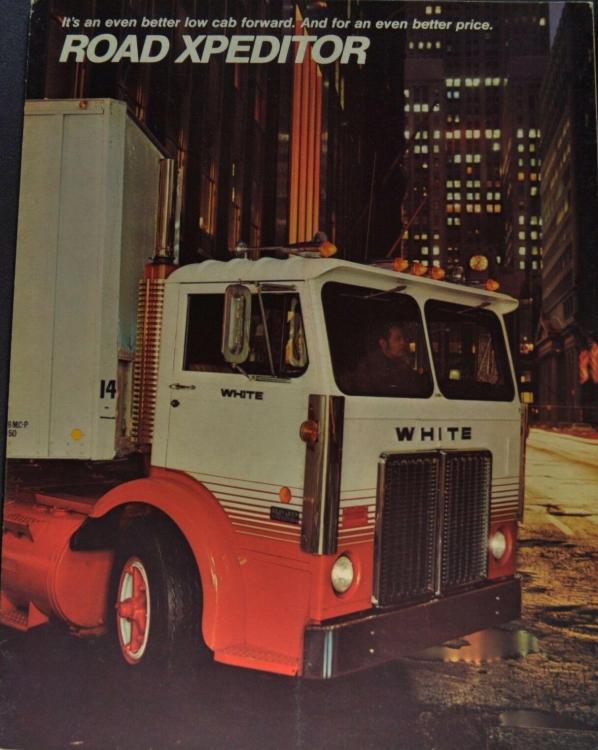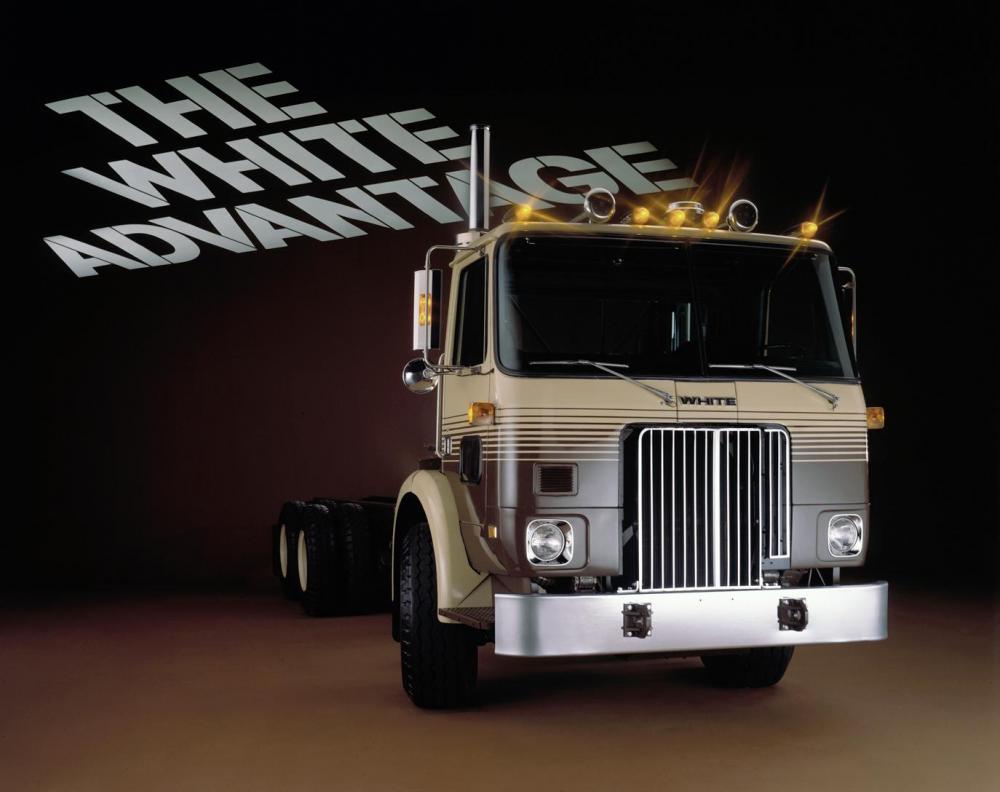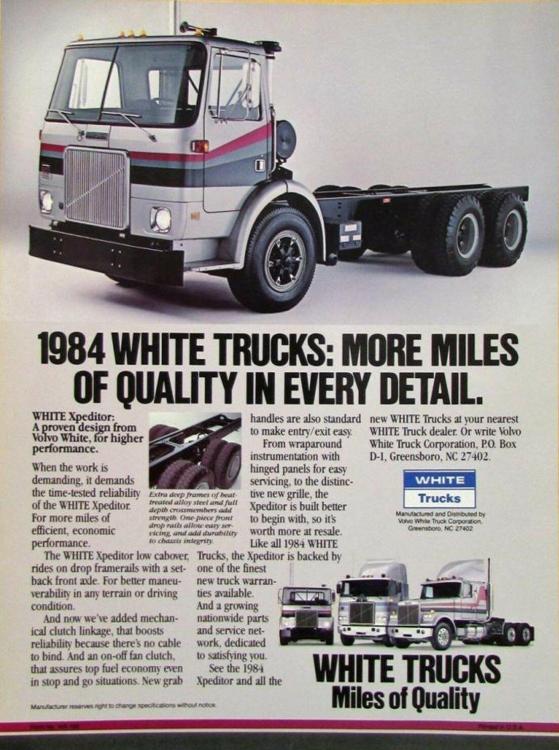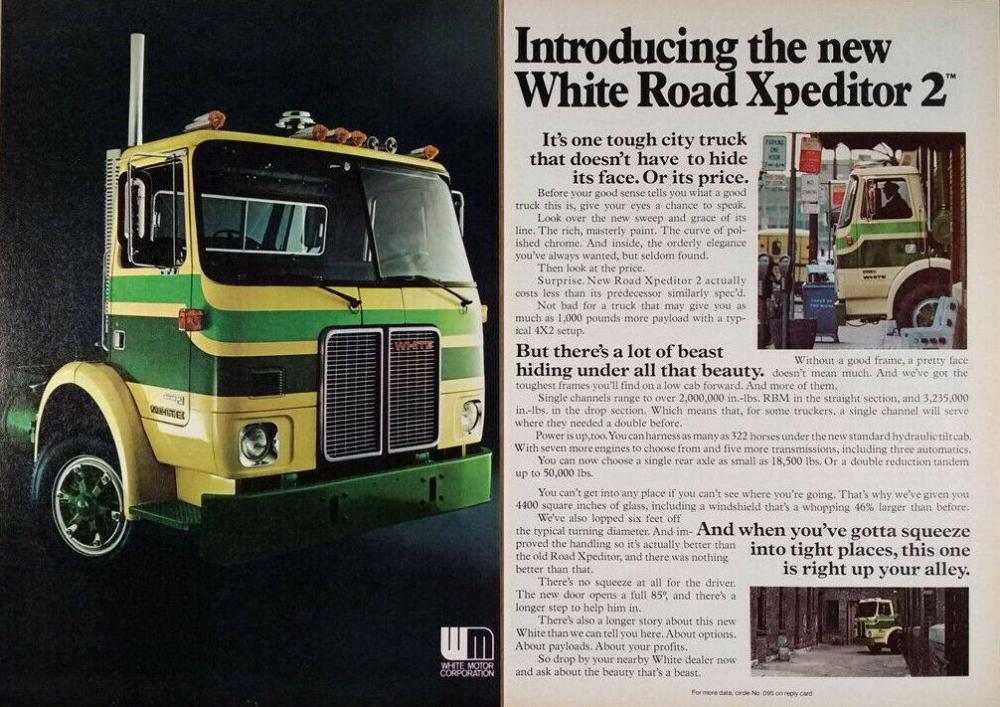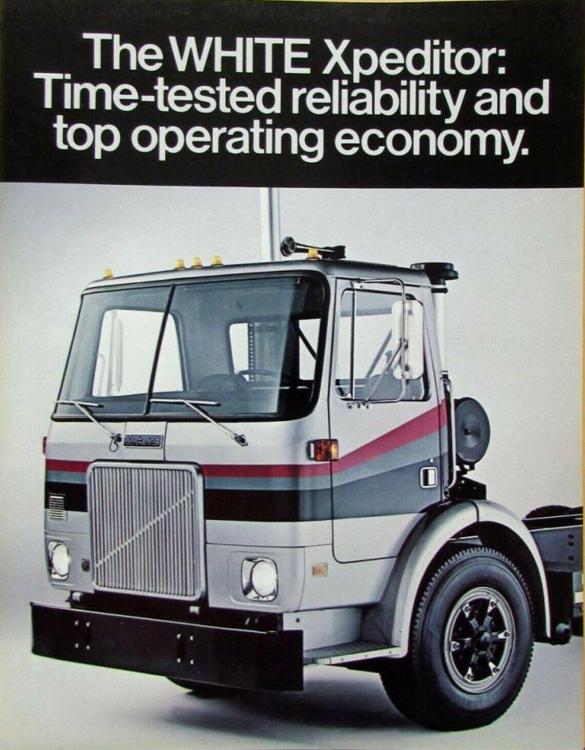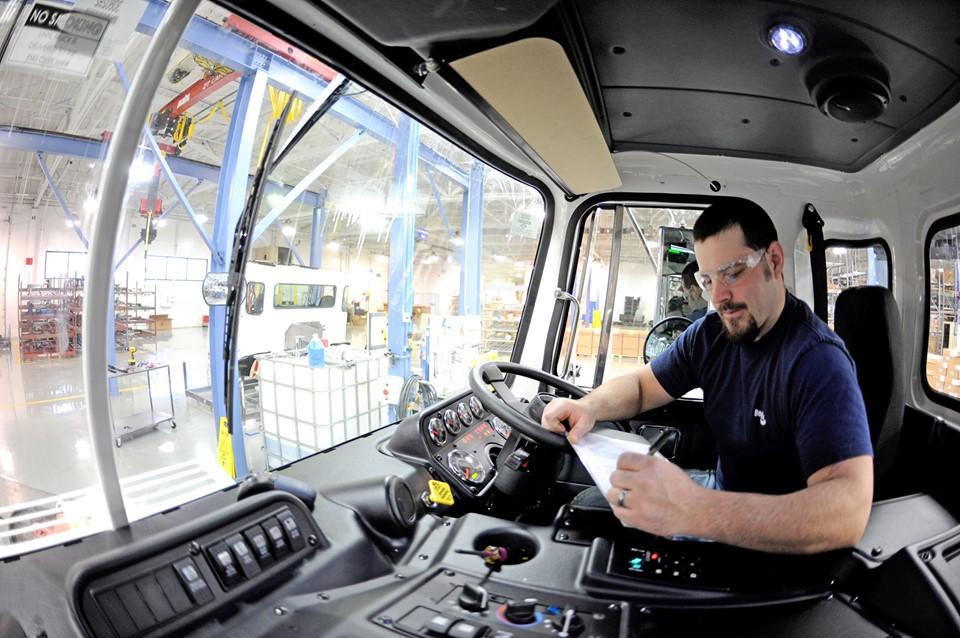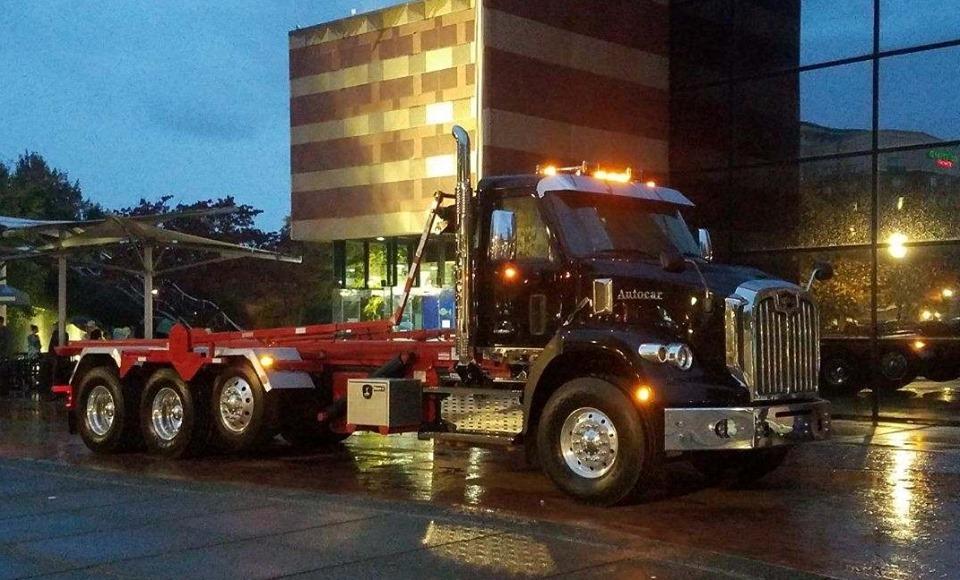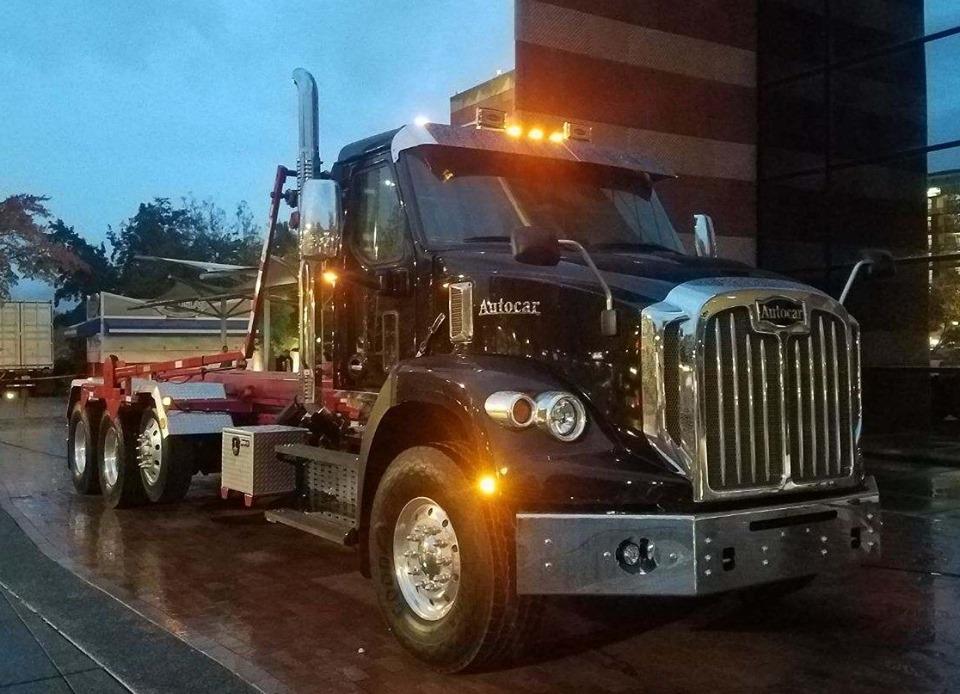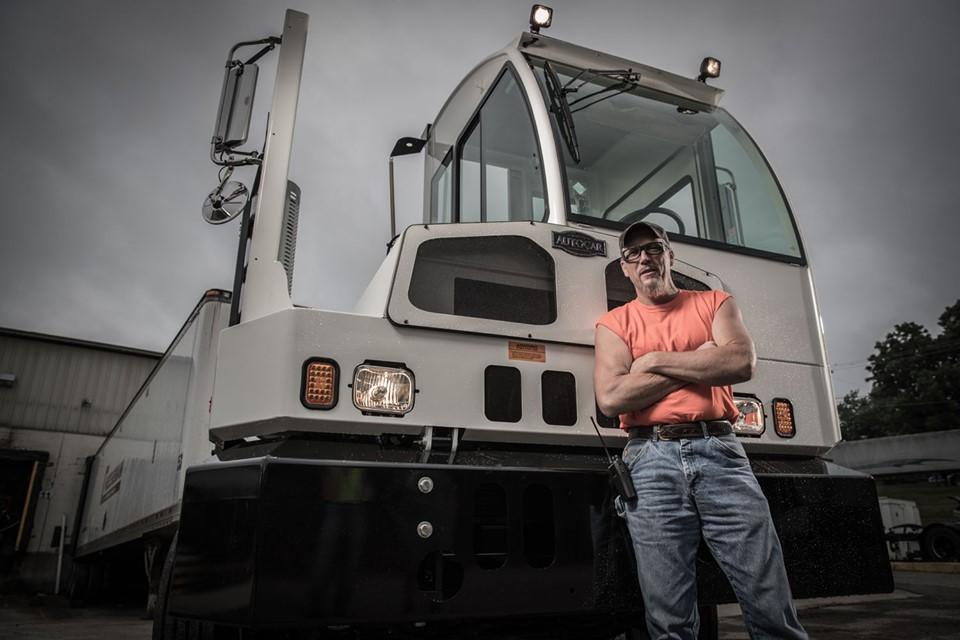
kscarbel2
Moderator-
Posts
18,541 -
Joined
-
Days Won
112
Content Type
Profiles
Forums
Gallery
Events
Blogs
BMT Wiki
Collections
Store
Everything posted by kscarbel2
-
Closed-cell spray foam insulation.
-
Car & Driver / November 30, 2019 The Dale Jarrett UPS truck was built in 2006 by Mike Ryan, a stunt-vehicle builder, in less than three weeks. His team took a 23-foot-long 1990 UPS P-800 Package Car with more than 300,000 miles on the odometer, stripped it down completely, and transformed it with a fabricated roll cage, a TRD race engine, a custom transmission, racing suspension and shocks, a roll cage and racing gauges, and a racing harness, On December 4, that truck is going up for auction online by Iron Horse Auctions, with a minimum bid of $1 and a one-week period of bidding. UPS originally formulated the ad campaign featuring the truck to promote their NASCAR sponsorship, but as it caught on with fans, there was a push for the truck to appear on the track that became a running joke. UPS then shot another commercial of Dale Jarrett agreeing to race the truck to great acclaim, and he drove it around the track at the All-Star race, his final event before retiring in 2008. .
- 1 reply
-
- 2
-

-

-
Renschler isn't because he realizes that Scania is the heart, the engineering prowess, of their global truck group.
-
Jim, I am not with Autocar. However, Autocar represents the kind of truckmaker I like, and that category includes the enthusiastic truck people at Ford International (Ford-Otosan), and of course the global benchmark Scania.
-
The X12 is NOT available from Paccar. The previous ISX12 was available.....and popular. But this year, when the X12 replaced the ISX12, Paccar did not sign a purchase agreement with Cummins for the X12, opting to only offer its own Paccar engines. Currently, only Autocar, Freightliner* and Western Star offer the X12 in the U.S. market. Paccar, I feel, shot themselves in the foot. Customers like choice, and the X12 is a great option. Their arrogant decision has already alienated a lot of Paccar customers. * https://www.bigmacktrucks.com/topic/59782-cummins-x12-endurant-powertrain-now-available-in-regional-haul-applications/?tab=comments#comment-435627 https://www.bigmacktrucks.com/topic/55010-cummins-x12-engine-now-available-for-freightliner-114sd/
-
Happy Thanksgiving from the #Autocar family to yours! We are thankful for our amazing customers & our dedicated team members who are committed to delivering the safest, most reliable severe-duty trucks w/ the highest ROI. Always Up - Autocar Trucks
-
When you run #Autocar trucks in your fleet, every day is #BlackFriday due to big total ownership cost savings! Less downtime, less unscheduled maintenance & 40% fewer accidents w/ injury add up to a huge ROI advantage. #itsallabouttheuptime #uptime #safety Always Up - Autocar Trucks .
-
-
-
With the industry's largest all-steel cab, the most driver visibility & tightest turning radius, #Autocar is committed to the #safety of refuse professionals & the communities they serve. Always Up - Autocar Trucks .
-
Ford Trucks International Press Release / November 26, 2019 At Ford Trucks, our journey will continue until we're all over the world! 🌍 #FordTrucks #SharingTheLoad .
- 1 reply
-
- 1
-

-
Freightliner Cascadia Heads Down Under David Cullen, Heavy Duty Trucking (HDT) / November 25, 2019 A right-hand drive version of that quintessentially American longhauler, the Freightliner Cascadia, is available for order in the Oceania nations of Australia and New Zealand, Daimler Trucks North America announced on November 22. DTNA said it put a “substantial investment” into the Class 8 tractor to develop the RHD version and to “ensure it was ready for tough Australian and New Zealand environments and use cases.” In addition, the OEM said that an international on-road testing program was conducted in both the U.S. and Australia. On-road testing followed extensive development work performed at DTNA’s Portland, Oregon product validation and engineering center as well as dedicated track-testing at the company’s Madras, Oregon proving grounds. Dubbed the “Australia Pacific Cascadia,” the model for the lands Down Under will be available with two Detroit engines: The 16L DD16 with up to 600 horsepower and 2050 lb-ft of torque, and the 13L DD13 with up to 505 horsepower and 1850 lb-ft. of torque. Available transmissions will include the Detroit DT12 Automated Manual Transmission and an 18-speed Eaton manual transmission. “Our reputation for best real cost of ownership is a direct result of listening to our customers,” said Roger Nielsen, DTNA president and CEO. “For demanding Australian and New Zealand conditions, we doubled-down on our customer focus and listened to the voice of customers in the region to bring industry-leading technologies and the single best truck money can buy to markets that are very important to the company.” At launch, Freightliner will offer the Australia Pacific Cascadia with either a 116- or a 126-inch BBC dimension and in configurations ranging from a day cab to 36-, 48-, 60-, and 60-inch raised roof cabs. The Cascadia rollout will also mark the introduction in Oceania of the Detroit Connect, system, which enables remote vehicle updates, fault code diagnosis and repair recommendations, and OEM analysis of fuel economy and safety performance in addition to such “traditional” telematics services as GPS route-tracking and incident alerts. DTNA noted that the RHD Cascadia is now available to order through Freightliner’s Australian and New Zealand dealership network.
-
David Cullen, Heavy Duty Trucking (HDT) / November 26, 2019 Cummins Inc. is planning to lay off about 2,000 workers due to the downturn in the market. “As we communicated to our employees last week, demand has deteriorated even faster than expected, and we need to adjust to reduce costs,” Jon Mills, the engine maker’s director of external communications told HDT in an emailed statement. The company expects to complete the cuts in next year’s first quarter. As Cummins employs some 62,600 persons, the reduction will amount to slightly less than 3% of its global workforce. Mills said the worldwide engine builder has already taken “several actions” in response to declining revenues. These include “reduced discretionary spending across the company, several global efforts to optimize our operations, and voluntary headcount reductions.” He also said that Cummins will “continue to align production with demand at our manufacturing facilities. “Unfortunately,” he added, “we must do more to reduce costs because the downturn is happening at a sharper pace than we experienced in the previous two cycles. "We understand this is incredibly difficult for those directly impacted and for all employees across the company." Cummins did not specify where the job cuts may land, either in terms of types of positions or location of operations. Word of the layoffs came less than two weeks after Cummins rolled out an ambitious environmental- sustainability strategy. Under its Planet 2050 plan, the company aims to set quantifiable sustainability goals for 2030 along with longer-term aspirations out to 2050. Cummins described its new environmental strategy as science-based and intended to meet or exceed the goals of the United Nations Paris agreement on climate change.
-
GM goes to war against FCA Hannah Lutz, Automotive News / November 25, 2019 DETROIT — When Sergio Marchionne and UAW President Dennis Williams opened contract talks in 2015 with a bear hug instead of a handshake, assembly workers recoiled at the idea that their union and employer were getting too cozy. The truth was more sinister, General Motors now claims. Marchionne, stymied by GM's refusal to entertain his merger proposal, had been bribing Williams and other UAW officials for years, GM says in a stunning federal lawsuit filed last week. The suit contends that the Fiat Chrysler Automobiles CEO was "using the UAW as the hammer" to make GM reconsider. Hours after the hug, GM says, Williams and some of his underlings — including the union's chief FCA negotiator, later sentenced to prison after admitting to taking FCA's bribes — celebrated at Detroit's London Chop House with an $8,000 meal on FCA's dime. FCA vehemently denied GM's allegations, accusing its domestic rival of trying to thwart this year's UAW negotiations and undermine its planned merger with PSA Group of France. The suit, arguing that FCA corrupted the bargaining process over the course of a decade to put GM at a labor-cost disadvantage while suppressing wages for thousands of its hourly workers, seeks potentially billions of dollars in damages. FCA went from having the highest labor costs of the Detroit 3 in 2006 to the lowest in 2015 by paying union officials to give it better deals, GM says. Suing FCA and three of its former executives wasn't "a decision that we made lightly," GM CEO Mary Barra said at an investor conference last week. But without a "level playing field," she said, "we had to take action." Marchionne, who died in 2018, "was a central figure in the conspiracy," said GM's general counsel, Craig Glidden. The three executives GM is suing — Alphons Iacobelli, Jerome Durden and Michael Brown — have pleaded guilty in a federal corruption probe. GM specifically excluded the UAW as a defendant, though six former union officials also have pleaded guilty, with former Vice President Joe Ashton expected to do so next week. FCA, in a statement, said it was "astonished" by the lawsuit and its timing, as the company works toward merging with PSA and finalizing a four-year labor contract with the UAW. Glidden told reporters that GM wanted to file the case within four years of the 2015 labor contracts that it believes were corrupted. Not until January 2018, when Iacobelli's plea agreement with the federal government became public, were details of the scheme and its effect on GM exposed, the complaint says. FCA funneled "millions of dollars" to certain UAW leaders, starting in July 2009, GM says in its lawsuit. The payments were designed to give FCA an unfair advantage in bargaining, it says, citing Iacobelli's admission of that, and "GM did not and could not have reasonably discovered this information earlier despite due diligence." Operation Cylinder Marchionne had long sought a merger partner. After GM rejected his overtures, FCA conspired with the UAW to weaken GM to make the merger proposition more appealing, GM alleges. GM says Marchionne called it Operation Cylinder, which is presumably a reference to the circular towers that house the company's headquarters in downtown Detroit. Marchionne and General Holiefield, the UAW vice president who negotiated the union's contract with FCA in 2011, were close friends, documented by a photo of a lively embrace between the two in 2009. Secretly, GM says, Marchionne treated Holiefield to lavish dinners, paid for his 2012 wedding in Venice, Italy, and got the couple's mortgage paid. Holiefield, who died in 2015, used his personal charity to conceal many of the bribes, the lawsuit says. His wife, Monica Morgan, pleaded guilty to taking bribes through her photography business and was sentenced last year to 18 months in prison. A month after Chrysler emerged from bankruptcy in 2009, Iacobelli and other FCA executives paid Holiefield hundreds of thousands of dollars, considered as an investment in "relationship building," GM says, citing Iacobelli's indictment. Marchionne also gave Holiefield a custom-made Terra Cielo Mare watch worth several thousand dollars, with a handwritten note saying he had declared its value as "less than fifty bucks," GM says. Marchionne at the table By 2014, the UAW's new president, Dennis Williams, a friend of Marchionne since the early 2000s, also was in on the conspiracy, the lawsuit says. Marchionne wanted to take over GM and run the combined company as its CEO, the lawsuit says, but needed UAW officials on his side because they could block the merger. GM rejected FCA's offer in April 2015, two weeks before Marchionne published a manifesto called "Confessions of a Capital Junkie." In it, Marchionne said an FCA-GM merger would save nearly $5 billion without laying off employees. That June, just before the formal start of UAW negotiations, Iacobelli abruptly stepped down from his post as FCA's vice president of employee relations. Marchionne assumed Iacobelli's place at the bargaining table across from Williams, Vice President Norwood Jewell and other leaders GM says FCA had bribed. Jewell recently was sentenced to 15 months in prison. Williams and Cindy Estrada, the UAW's vice president in charge of relations with GM at the time, advocated for the merger proposition in a meeting with GM brass later that month, the lawsuit says. Expensive contract The UAW's initial contract demands in 2015, GM says, would have cost about $1 billion more than the 2011 agreement. As the largest and most profitable of the Detroit 3 at the time, GM believed it would be the primary negotiation target, typically an advantageous position because it sets the pattern that the other two companies generally follow. GM had been the target in 2007 and 2011. This year, being selected first backfired on GM, when the UAW went on strike for 40 days. GM says that early in the 2015 talks, it was homing in on a deal with an incremental cost of about $800 million. Then the UAW named FCA as its target, surprising much of the industry. GM says the FCA-UAW deal it had to follow instead resulted in a contract with an incremental cost of nearly $2 billion. "With cooperation of UAW leadership purchased through bribes," the lawsuit says, "Marchionne schemed to use the collective bargaining process to harm GM by becoming the lead in negotiations and attempting to force a merger of the companies." Marchionne called FCA's contract with the UAW, negotiated over just two days, "transformational." The economics of the deal, he said when it was announced, were irrelevant because the costs "pale in comparison given the magnitude of the potential synergies and benefits." Williams called the 2015 FCA deal "one of the richest ever negotiated" and labeled the bargaining process with FCA a "testament to the UAW's democratic values and commitment to our members." He retired in 2018 and has not been charged with a crime, but agents raided his home in August. When he chose FCA as the 2015 target, Williams told a GM executive he would explain why when he retired but has not done so, the lawsuit says. GM says UAW officials, in return for the bribes they received, refused to give the company concessions that they agreed to with FCA. For example, the UAW allowed FCA to employ more temporary and lower-paid, second-tier workers than GM was allowed. GM agreed in 2011 to reinstate a pre-bankruptcy cap on second-tier workers in 2015, meaning that those in excess of the limit would be bumped up to top wages. But FCA made a "side letter" deal with the union that the number of second-tier workers would remain unlimited, GM says. "FCA hired tier-two workers with abandon, possessing the incredibly valuable foreknowledge that it would not be penalized by any reinstatement of the cap," GM's complaint says. "By 2015, tier-two workers made up around 42 percent of the UAW membership at FCA — double the proportion of tier-two workers at GM." Today, more than half of FCA's workers don't receive top pay, according to the Center for Automotive Research in Ann Arbor, Mich. If FCA follows the pattern of GM's and Ford's 2019 labor contracts, all current in-progression workers would get to top pay by 2023. ‘Worst to first' In another instance, the UAW agreed in 2014 to a new prescription-drug list that significantly reduced FCA's health care costs. GM requested the same deal, which would have saved it up to $20 million a year, but the UAW refused, GM says. From 2011 to 2014, FCA cut its labor costs by $8 an hour while doubling the gap between its costs and GM's, the lawsuit says. Ultimately, GM asserts, the nearly decadelong scheme "helped buy a wage advantage to take FCA from worst to first among the Detroit-based automakers."
-
The new #Autocar DC-64 roll-off really lit up downtown #Chattanooga at the 2019 TCAPWA/SWANA Conference. https://www.autocartruck.com/dc/ Always Up - Autocar Trucks .
-
Kenworth Truck Co. Press Release / November 20, 2019 .
-
The 1245- prefix for Brockway parts under the Mack parts system. Haven't seen that in a great many years.
-
General Motors declares corporate war on Fiat Chrysler Chris Bryant, Bloomberg / November 22, 2019 The racketeering lawsuit brought by General Motors against Fiat Chrysler Automobiles is a legal bombshell for the U.S. car industry. GM’s broadside lays out in forensic detail how FCA allegedly conspired over many years to funnel payments to UAW officials, corrupt the collective bargaining process on wages and thus secure a competitive advantage. In essence, it’s trying to rewrite the American auto industry’s past decade of history, which saw both GM and Chrysler bounce back dramatically from Chapter 11 bankruptcy. In GM’s telling, the merger of Italy’s Fiat with Michigan’s Chrysler and their subsequent renaissance under the leadership of Sergio Marchionne was built on corruption. It may have a hard time proving parts of its case, particularly its assertion that the goal of the alleged conspiracy was to weaken GM and force it into a merger with Fiat. The Italian company says the lawsuit is groundless, implying that any bribe-paying would have been a case of a few bad apples. This is an awkward defense, though: Federal prosecutors have accused FCA managers of trying to keep union officials “fat, dumb and happy” and three of the company’s executives have pleaded guilty to various charges. Regardless of whether GM succeeds in extracting billions of dollars compensation from its rival, the lawsuit seems calculated to punish Fiat and destabilize its recovery. Fiat’s proposed merger with France’s Peugeot SA, a prospective labor deal with the UAW and the reputation of the deceased Marchionne are in the balance. Relations between the two carmakers and with America’s trade unions will never be the same again. GM’s lawsuit contains plenty of salacious claims, but this goes far beyond the accusations of fancy meals, trips and gifts to UAW officials to secure lower and more flexible labor costs. In GM’s allegations, the original sin goes all the way back to 2009 when the Italian company “managed to win the support of the U.S. government in obtaining operational control, for no cash, over an iconic U.S. auto company”. And GM leaves little doubt about where the buck stops for the alleged orgy of trade union bribery that ensued: former Fiat boss Marchionne. This is shocking because for many investors Marchionne was a hero who created huge value. Doubtless this grated with GM, whose own remarkable post-crisis recovery allowed it to fend off FCA's merger overtures. Casting a cloud There are other things that cast a cloud over the Marchionne era. Last year the U.S. Securities and Exchange Commission found that during his tenure FCA fraudulently misled investors about how many new vehicles it and its dealers sold each month. Furthermore, the U.S. brought criminal charges against FCA this year related to alleged diesel emissions cheating between 2011 and 2017. The automaker agreed to pay $800 million in January to settle diesel lawsuits brought by states, car owners and the U.S. Department of Justice, which labeled it a “bad actor.” While Marchionne isn’t alive to defend himself, the mantle of savior of the auto industry has passed to Peugeot’s boss Carlos Tavares. He acquired GM’s Opel/Vauxhall European subsidiary in 2017 and turned it around in record time, an embarrassment for GM which achieved nothing but losses there. The GM lawsuit will be a big test for him, and may encourage him to rethink the terms of the Peugeot-Fiat merger, which clearly favor the Italian side. GM’s move also puts the screws on the UAW to bargain particularly hard with FCA over a new labor deal. If the union fails to emerge with good terms from those talks, it will look beholden to a carmaker from whom former officials allegedly accepted bribes. These scorched-earth tactics could yet backfire for GM. The technological and regulatory upheaval that’s upended the auto industry probably needs cooperation, not feuds. GM has already secured a new labor deal with the UAW, but re-airing the union’s dirty linen won’t help its own employee relations, which have been scarred by 40 days of strikes this year. GM says the timing is coincidental but nothing about this lawsuit feels haphazard. It’s a precision-guided declaration of corporate war.
-
GM recalls 640,000 pickups that could cause carpet fires Hannah Lutz, Automotive News / November 19, 2019 General Motors is recalling more than 640,000 pickups that could cause a fire when seat belt pretensioners deploy during a crash. Certain 2019 and 2020 Chevrolet Silverados and GMC Sierras are included in the recall: the Chevrolet Silverado and GMC Sierra 1500 and the heavy-duty Chevy Silverado and GMC Sierra 2500/3500, according to GM and a NHTSA filing. There have been two fires as a result of the defect but no accidents, injuries or fatalities, GM said. GM has instructed dealers to stop selling the vehicles until repairs are complete. During a collision, when seat belt pretensioners deploy, hot pretensioner exhaust gases could be released in the vicinity of a carpet floor covering that could catch fire, GM and NHTSA said. Pickups with vinyl floor coverings are not included in the recall. Corrections that prevent the exhaust from contacting the carpet were implemented at assembly plants in Silao, Mexico, Fort Wayne, Ind., and Flint, Mich., last month. GM notified dealers of the recall November 14.
-
Have you met the Autocar ACTT terminal tractor? Maybe you say "spotter truck" or "yard dog". Any way you say it, the ACTT moves four times more trailers per day than ordinary trucks, and it's safer, more reliable, and cheaper to run than any "goat" you might have tried before. That's why all the big names in freight now run #Autocar. Check it out: https://www.autocartruck.com/terminal-tractor/ Always Up - Autocar Trucks .
BigMackTrucks.com
BigMackTrucks.com is a support forum for antique, classic and modern Mack Trucks! The forum is owned and maintained by Watt's Truck Center, Inc. an independent, full service Mack dealer. The forums are not affiliated with Mack Trucks, Inc.
Our Vendors and Advertisers
Thank you for your support!


